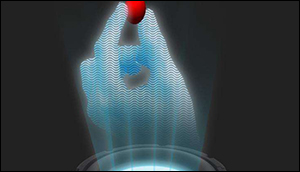Sonic tractor beam invented
28. 10. 2015 | Phys.org | www.phys.org
A team of researchers from the Universities of Bristol and Sussex in collaboration with Ultrahaptics have built the world's first sonic tractor beam that can lift and move objects using sound waves.
Tractor beams are mysterious rays that can grab and lift objects. The concept has been used by science-fiction writers, and programmes like Star Trek, but has since come to fascinate scientists and engineers. Researchers have now built a working tractor beam that uses high-amplitude sound waves to generate an acoustic hologram which can pick up and move small objects.

The technique, published in Nature Communications, could be developed for a wide range of applications, for example a sonic production line could transport delicate objects and assemble them, all without physical contact. On the other hand, a miniature version could grip and transport drug capsules or microsurgical instruments through living tissue.
The researchers used an array of 64 miniature loudspeakers to create high-pitch and high-intensity sound waves. The tractor beam works by surrounding the object with high-intensity sound and this creates a force field that keeps the objects in place. By carefully controlling the output of the loudspeakers the object can be either held in place, moved or rotated.
Read more at Phys.org
Image Credit: Asier Marzo, Bruce Drinkwater and Sriram Subramanian
-jk-




